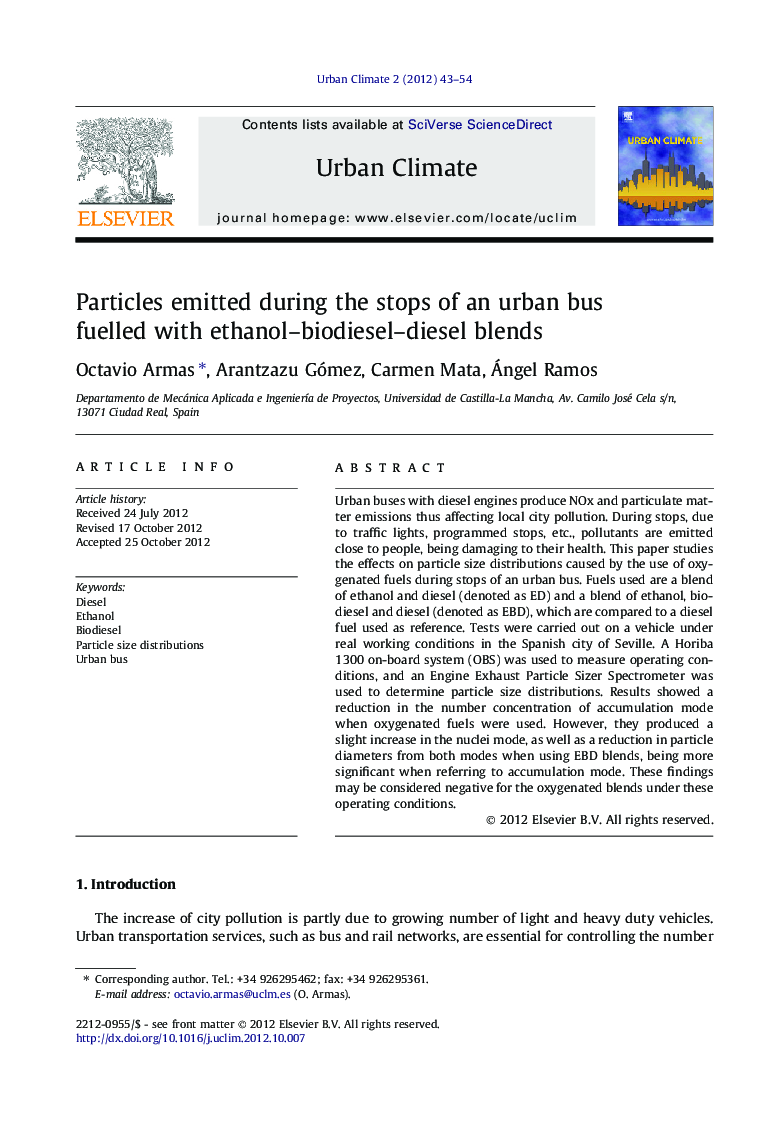| Article ID | Journal | Published Year | Pages | File Type |
|---|---|---|---|---|
| 6577028 | Urban Climate | 2012 | 12 Pages |
Abstract
Urban buses with diesel engines produce NOx and particulate matter emissions thus affecting local city pollution. During stops, due to traffic lights, programmed stops, etc., pollutants are emitted close to people, being damaging to their health. This paper studies the effects on particle size distributions caused by the use of oxygenated fuels during stops of an urban bus. Fuels used are a blend of ethanol and diesel (denoted as ED) and a blend of ethanol, biodiesel and diesel (denoted as EBD), which are compared to a diesel fuel used as reference. Tests were carried out on a vehicle under real working conditions in the Spanish city of Seville. A Horiba 1300 on-board system (OBS) was used to measure operating conditions, and an Engine Exhaust Particle Sizer Spectrometer was used to determine particle size distributions. Results showed a reduction in the number concentration of accumulation mode when oxygenated fuels were used. However, they produced a slight increase in the nuclei mode, as well as a reduction in particle diameters from both modes when using EBD blends, being more significant when referring to accumulation mode. These findings may be considered negative for the oxygenated blends under these operating conditions.
Related Topics
Physical Sciences and Engineering
Earth and Planetary Sciences
Earth and Planetary Sciences (General)
Authors
Octavio Armas, Arantzazu Gómez, Carmen Mata, Ángel Ramos,
